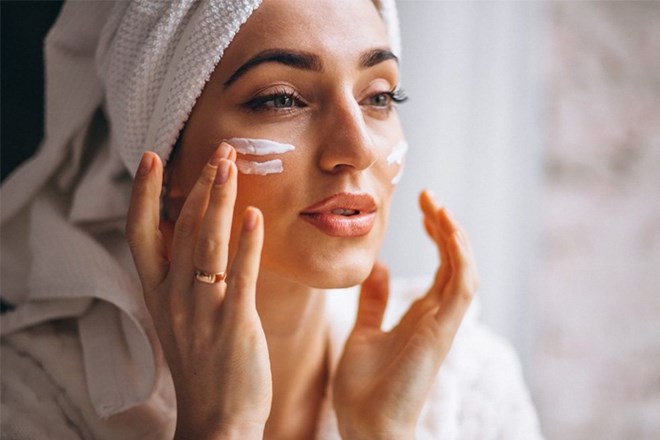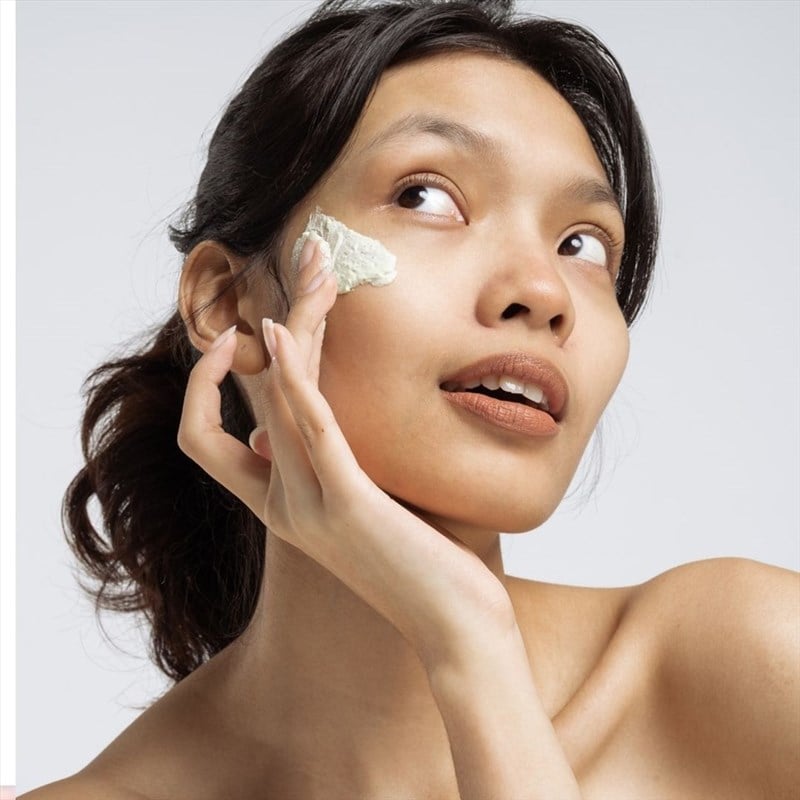Reasons Why Sunscreen Gets Clumpy
Due to the ingredients of the sunscreen
Most sunscreen products contain film-forming agents or silicone in their ingredients but these substances cannot be absorbed into the skin, causing the sunscreen to become clumpy when applied.
In addition, when using other cosmetics along with sunscreen, it can also contribute to the clumping and uneven application.

Due to the combination of oil-based and water-based ingredients
Most oil-based products do not mix well with water-based products, resulting in separation and clumping on the skin.
Due to excessive use
Using too many skincare products such as sunscreen, moisturizer, and serums can prevent proper absorption into the skin. The excess product can cause the sunscreen to feel sticky and clump.
Due to individual skin conditions
Dry, flaky skin, lack of exfoliation or moisturization can affect the ability of sunscreen to fully dissolve. The excess oil and dead skin cells can create a residue that makes the skin feel dry and patchy.
Proper Use of Sunscreen to Avoid Clumping
Ensure proper moisturization
Moisturize your skin before applying sunscreen to help the sunscreen absorb better. This helps minimize clumping and prevents the appearance of visible particles affecting the overall appearance.
Dry skin may not absorb sunscreen efficiently, resulting in clumping or uneven application. Dehydrated skin can also be damaged by sun exposure, reducing the effectiveness of sun protection.

Therefore, make sure to adequately moisturize the skin before applying sunscreen by using a moisturizer or hydrating serum.
Apply sunscreen 15-20 minutes before going outside
Applying sunscreen 15-20 minutes before going outside allows the sunscreen to fully absorb into the skin, creating a protective barrier and increasing sun protection.
Apply the appropriate amount
The amount of sunscreen used depends on various factors, including skin sensitivity and duration of sun exposure. Avoid using too much sunscreen, apply a small amount and spread evenly before applying the remaining product.
Using the right amount of sunscreen and ensuring even application can reduce the risk of clumping.
Divide the amount of sunscreen into smaller portions. Dabbing sunscreen onto different areas of the face helps control the amount used, minimizing the chances of using too much sunscreen and causing clumping.

After applying sunscreen, gently pat and blend to ensure the product is absorbed into the skin.
Consider your skin type
Choose a sunscreen with gentle and non-irritating ingredients. Look for ingredients such as zinc oxide, titanium dioxide, or plant extracts.
If you have sensitive skin, opt for a sunscreen with a low SPF, around 15-30. For oily or combination skin, you can choose a sunscreen with SPF 30-50. For dry or normal skin, go for SPF 50 or higher.
If you have oily or acne-prone skin, select an oil-free sunscreen.































